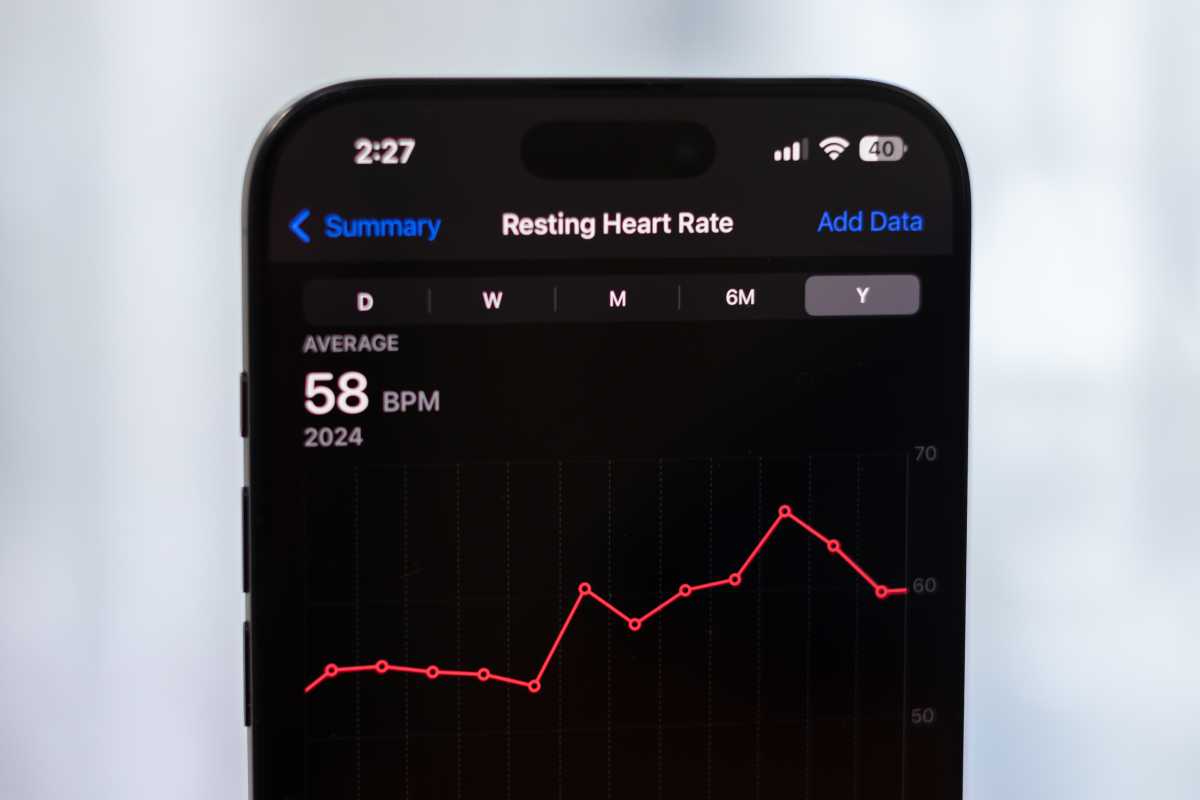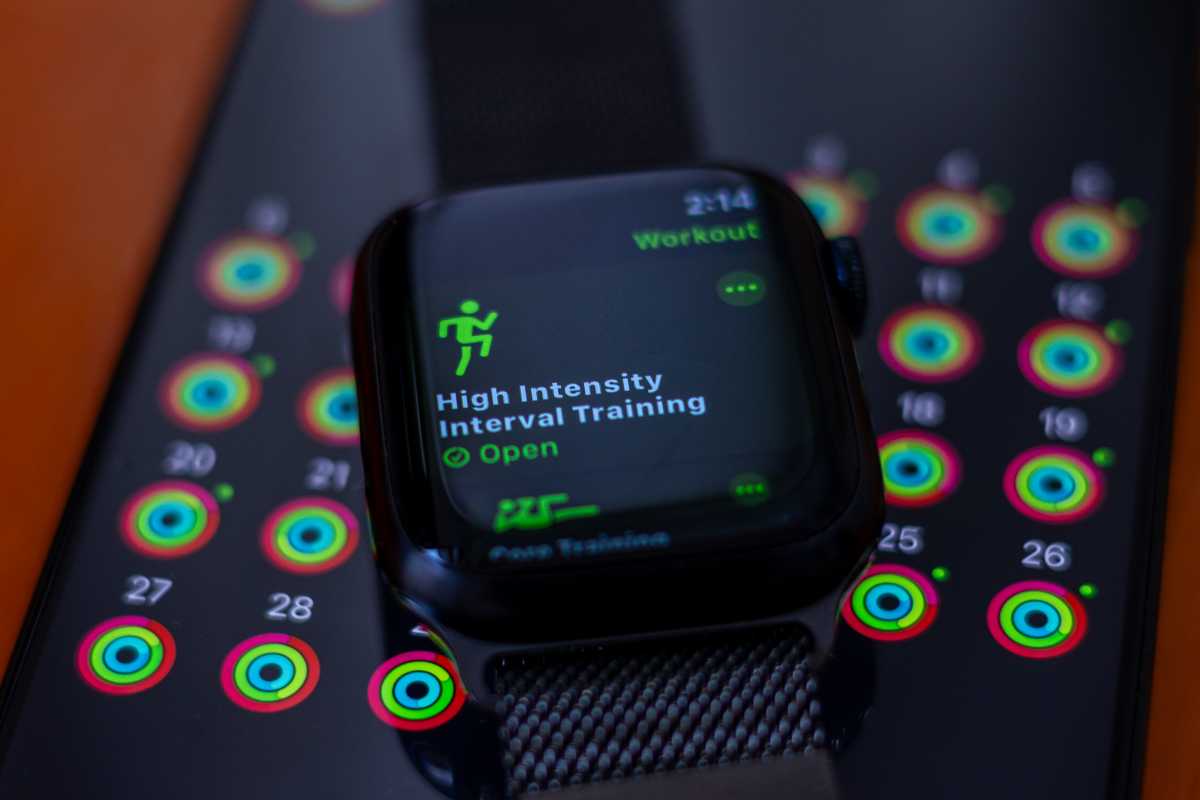The Apple Watch often makes headlines for saving lives by detecting signs of AFib, calling emergency services after a crash or fall, and other safety features. That wasn’t really the reason I bought one a few years ago.
I was merely interested in the Apple ecosystem perks, like automatic Mac unlocking, iPhone notification mirroring, and music playback controls. So, despite sometimes recording my random workouts, I muted activity ring alerts. Closing them didn’t mean much to me.
That all changed when I received a single notification late last year.
It was October 23, 2024. I was sitting on my couch at home when my iPhone’s Health app alerted me about a change in my average resting heart rate. Following months of inactivity and overthinking stressful matters beyond my control, that rate started to climb from 53 BPM in May to an all-time high of 66 BPM in October. I then checked my cardio fitness data, and it had dropped to its lowest value yet, with an alarming VO2 max of 34.9 mL/kg/min.

Foundry
The great thing about the Apple Health app is that it proactively monitors users’ metrics and notifies them about relevant changes, be they positive or negative. Those wearing their Apple Watches for prolonged periods can also view graphs visualizing their changes over the years.
I glanced at my arm and realized I had been underutilizing the health computer strapped to my wrist.
For a long list of personal reasons, I no longer hit the gym. That is not an excuse to remain idle, as the alternatives are plentiful. In my case, I decided to opt for Fitness+ workouts, as the service is bundled with my Apple One subscription and won’t cost me an additional $10 per month. As it turns out, it’s exactly the kind of coaching I need.
Beyond its ease of use and accessibility on Apple TV’s larger screen, I appreciate the diversity of Fitness+ content. I get to pick between multiple workout types, durations, coaches, music genres, equipment, and so on. Thanks to the included filters, I can quickly narrow the results and find a video that matches my current mood and energy levels. Each session also typically features three coaches that cater to different capabilities. I don’t have to browse through hundreds of videos to find the right one and helps me jump right into the action.

Foundry
To get started, I committed to at least 10 minutes of high-intensity interval training (HIIT), as it’s one of the most demanding workouts on the platform. On certain days, I’d increase the duration to 20 or 30 minutes, or opt for kickboxing, yoga, or core when seeking lighter activities.
By December, my average resting heart rate had dropped to 60 BPM and VO2 max rose to 41.9 mL/kg/min. This pushed me to further embrace Apple Fitness+, as it was evidently improving my cardiovascular health. At some point, you adapt to specific coaches and their approaches, and working out with them every evening becomes a rewarding activity you look forward to rather than a dreadful chore.
Besides the subscription service, Apple offers free features in its built-in Fitness app. For starters, I re-enabled activity ring notifications, as I’ve been committed to closing them daily for over a month now. This reminds me to stand every hour, exercise for at least 30 minutes, and burn over 500 active calories a day.
The app also offers daily, weekly, monthly, and seasonal awards that challenge you to finish certain tasks. I especially value the social aspect of the app, which lets me view my friends’ activities, compete against them, and exchange motivational texts. It truly helps push one’s boundaries and adopt healthy routines.
While the Apple Watch is primarily known for the Fitness app and its paid offerings, its health features extend beyond that. Thanks to sleep tracking support, I’ve been making a conscious decision to meet my nightly sleep goal to ensure I’m well-rested during the day.
Meanwhile, the Mindfulness app has taught me to dedicate short breaks during the day to focus on my breathing. It also helped me train my brain to focus on deep breaths during anxiety flare-ups. This has played a key role in stress management, which can notably impact one’s cardiovascular health.
Other nice-to-have perks include loud noise alerts, which remind me to enable active noise cancelation (ANC) in clamorous environments to protect my hearing. Likewise, ECG tests offer reassurance and peace of mind when performed periodically.
What I love about my Apple Watch Series 9 is how versatile it is. When I first bought an earlier model years ago, it was primarily for the integrations with my iPhone and Mac. Today, I still rely on those Continuity features, but it also accompanies me as I work out and collects essential data throughout the day.
That chilling Health notification I received last fall kickstarted my active lifestyle. Had I not used an Apple Watch, that catalyst would’ve been eliminated from the equation, barring me from escaping an increasingly unhealthy cycle.
Apple’s commitment to introducing and maintaining health features makes me appreciate its products more now. Not only do these devices perform their typical computing tasks, but, in a way, they also take care of us and ensure we’re doing all right.



